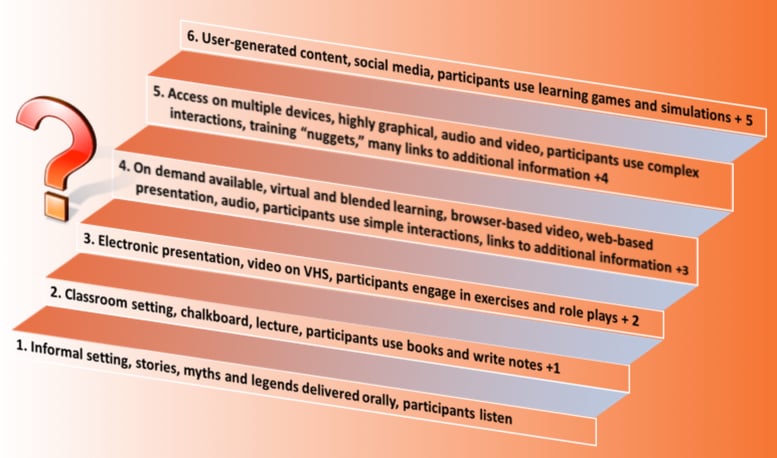One of the biggest challenges senior sales leaders face is how to onboard and train millennial salespeople. This is particularly true for more established organizations who have used traditional classroom-based sales training programs as their primary method for training new hires.
The rapid pace of technology innovation and concerns about adopting new training technologies and methods is driving much of the consternation regarding how to train millennials.
Millennials Want Answers Now
While millennials are no strangers to classroom-based learning, this is only a small part of how they gain and apply knowledge. Unlike their parents who learned through classroom lectures, books, handouts, and live discussions, millennials are much more comfortable learning virtually, including web sites, online discussions, and videos. They can also quickly access Google or YouTube to better understand or research any topic that interests them.
Instructional Design expert Debbie Conger, has developed a training road map that illustrates the dramatic changes in training technologies that have occurred recently.
Leveraging Technology Effectively
Given how millennials prefer to learn, we have to think about how we can “repackage” sales training content to make it relevant to them.
Today’s training trends such as social learning, mobility, and gamification will not produce any sustainable skills improvement unless the underlying content aligns with the development needs of the audience.
In addition, irrespective of how the training is delivered, the core elements of any successful sales training program will include foundational selling skills such as call planning, identifying customer needs, aligning your solution with the customer’s needs, presenting value, etc.
Here are five factors to leverage technology effectively in sales training:
- Offer blended programs that include traditional classroom (ILT) and virtual classroom (VILT) learning.
- Space out the learning so that learners can internalize and apply what they have learned.
- Extend the learning through online sales coaching and mentoring programs.
- Create rapid eLearning that can be accessed on-demand through any connected device.
- Develop and foster sharing of information (including user generated content) through online discussion.
The Proliferation of Technology in Sales
Nearly every sales profession now relies on standard sales and social medial tools such as Salesforce.com, WebEx, and LinkedIn. Sales organizations are increasingly deploying iPads and other mobile devices to provide just in time access to business, industry, product, and customer information.
Well designed programs should leverage technology in a way that it is relevant and accessible to millennials. Evaluate where your sales training program is now on the roadmap, decide where you want go and over what time period, and then develop a well thought out plan to achieve your training objectives.

